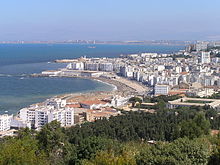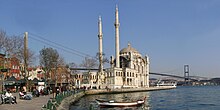As per news reports, Government of India, Ministry of Tourism, survey
report indicates that Kashmir has the capacity to receive 3 crore
tourists every year. It is very scary in the sense that 3 crore people
trampling over the fragile environment of Kashmir would turn it into a
garbage hell in no time. Amarnath Yatra is a living example of the
threat posed by mass tourism to environment. Tourism is not counted by
numbers or arrivals but by bed nights which reasonably paying tourists
spend at a place. Tourism is universally acclaimed to be the biggest
export industry. It is the largest foreign exchange earner for countries
possessing varied tourist attractions. Tourists bring in large amounts
of foreign exchange and take away only some souvenirs and lots of
goodwill. Being service oriented, it is also an extensive job provider.
However, Tourism has its negative side also!
Tourism as an appreciable economic activity started
in Kashmir only after the entry permit system to the State was
abolished. Till that time people entering or leaving the state had to
obtain a permit. There was no mass movement of tourists and yatris as is
happening now. Prior to 1947 Kashmir had remained a special preserve of
the British Army Officers and their families. Gulmarg was their most
sought after fashionable resort. House Boat on the River Jhelum was
their introduction. The British wanted to build some guest houses for
themselves but due to the State Subject Law they could not own any land.
So they came in with the innovation of a house on water which did not
require any land except a mooring ghat. Even for this a mooring ghat law
was enacted. There were no boats on the lake. Only temporary permits
were allowed for going through the lake. Moreover, all house-boats had
dry toilets and there were no flush toilets emptying all the refuse in
the lake or the river.
Thus the main clientele
for Kashmiris prior to 1947 were the British and some other foreign
travellers. However, Kashmir has been known as the most attractive
leisure spot from the ancient times. Mughals enjoyed its beauty and it
was in their time that the famous couplet, “If there is a Heaven on
Earth, it is this, it is this, and it is this” got associated with
Kashmir. Even in present times, as a tourist destination Kashmir has no
parallel in the entire world. Kashmir has been bestowed by Nature with
the most extensive potential for development of every kind of Tourism.
Its unique environment makes it a “Heaven” for the leisure and pleasure
loving tourist. The mountains, the forests, the meadows and the fast
flowing mountain streams make it the ultimate destination for adventure
tourism. A paradise in the bosom of the mighty Himalaya! Apart from
dozens of summer resorts, Kashmir has the potential of setting up of a
dozen world class ski resorts.
Historically, Kashmir has an agricultural based
economy. More than 70% people are involved in agriculture and
horticulture. Handicrafts come next and the main income even from this
sector is from the exports and not from retail sales to the tourists
visiting the valley. According to Export Promotion Council of India, the
handicraft export, especially of the carpets grew manifold during the
upheaval of nineties. Carpet looms spread into the rural areas and some
of the local export houses started operating from Delhi. Same was the
situation with horticulture especially the export of apples from the
state. Hundreds of crores worth apples and some other fruit are exported
from Kashmir to rest of India. Even some factories are exporting apple
juice concentrate to Germany and some other countries.
There are no two opinions that with the possession
of extensive potential, Tourism has tremendous possibilities of
development in Kashmir.However, apart from the basic requirements of
potential, physical accessibility, and infrastructure prescribed under
the concepts of area development and physical planning for tourism,
there is the most fundamental requirement of the political stability of
the area. No one wants to go to an area which is proclaimed all over the
world as the most dangerous place, Asia’s nuclear hot spot and so on.
Every second day there is news all over the world about blasts,
encounters, and other incidents regarding Kashmir. The most important
primary consideration for a popular tourist spot is “Peace”! In view of
this uncertain situation, the tourist arrivals show a swing effect.
These keep on rising and falling from time to time. Sometimes there is a
boon and supposedly a million tourists arrive while as other times
there is a complete drought with hardly any arrivals. In view of this it
is not advisable to make Tourism as the so called “backbone” of the
economy. Such an economy can collapse with every upheaval. Tourism for
the present can at best be an additional economic activity and not the
main base. Once Kashmir enjoys the real and settled peace, Tourism can
become one of the key activities for its economy.
In addition to a peaceful atmosphere, there are two
other important elements most essential for development of international
class tourism which can substantially contribute to the economy of a
place. These are physical accessibility and infrastructure. To attract
foreign tourism of higher class it is essential to be on the
international air route map. Without direct international air
connectivity, Kashmir has very little chance of becoming a world class
tourist destination. It is a pity that in spite of the so called
international airport we have no direct international flights. Even the
surface connectivity is very tough and undependable due to sliding
mountain terrain on way from Jammu to Srinagar. Historically the
easiest, short and dependable surface connectivity to Kashmir has been
along the Jhelum Valley Road. It should be reopened for international
tourism. Regarding the infrastructure, there are hardly any staying
places of the global standards. The power, the roads, the water supply,
civic facilities like garbage disposal, drainage and so on leaves much
to be desired. The capital city of Srinagar is not able to cope up with
the local population, not to talk of international tourists.
Accommodation such as five star hotels and surface transport comprising
luxury cars, air-conditioned sight-seeing coaches too need to be
supplemented in a big way. In this regard the fundamental requirement is
to give a free hand to the private sector for developing the commercial
side of tourism while the government should only undertake overall long
and short term planning, incentive to private sector and regulation of
the trade.
Next is a very important requirement, the attitude
of the local people. Kashmiris are generally by tradition very
hospitable and friendly. They welcome all guests who come in peace with
love. However, what is important is the behaviour and attitude of the
people directly in contact with the tourists. Even though as a whole all
are appreciative of the treatment given by the people dealing directly
with the tourists, yet there have been many instances of rude behaviour,
pestering and cheating. One needs to remember that the good will of a
thousand tourists gone back with happy memories is destroyed by a single
unsatisfied tourist! There have been umpteen instances of tourists
being mobbed, pestered, harassed and even cheated in some of the posh
resorts like Gulmarg. In a number of cases, some tourists have gone back
even without visiting these resorts. At one time travel agents and taxi
operators had threatened to boycott Gulmarg because of the attitude of
local ponywallas. The most unfortunate part is that the J & K State
is the only state which has a very stringent legislation called the J
& K Registration of Tourist Trade Act under which touting and
pestering of tourists is a cognisable and non bailable offence. However,
the enforcement of the law is virtually non-existent! Something needs
to be done in this regard by the travel trade, the government and the
people in general.
Finally
it must be pointed out that Tourism is also related to local
environment. In fact, in our case the natural environment is the primary
factor for making Kashmir as the most sought after tourist destination.
The natural landscape and the salubrious climate are our most important
potential. These for us are the proverbial golden goose of tourism.
However, it can continue to lay golden eggs only as long as we develop
it in a sustainable way. Any attempt at overrunning the environment with
crores of tourists is bound to kill the golden goose! Many a famous
tourist destinations in the world have been destroyed by over
development of the tourism product. Each area has a carrying capacity
going beyond which it can suffer irreversible damage. The Government of
India, Ministry of Tourism while declaring the possibility of Kashmir
having over three crore tourists should also commission a team to
determine the carrying capacity of our tourist areas so as to ensure
sustainable tourism. Otherwise we may cause more damage than good. Here,
it needs to be pointed out that our planners as well as politicians
seem to be obsessed with tourism. One can ask why environment and
infrastructure has to be considered only for tourists. It gives an
impression that the local population does not count in regard to these
important elements!
Thus taking a long term perspective view of Tourism,
it emerges that it is an important economic activity. However, in the
present context it is not advisable to make it the backbone of our
economic activities. We should allow it to remain as an additional
economic activity. We should also aim for sustainable development in
this sector to preserve our fragile ecology and environment. It must
also be ensured that Tourism is not politicised by making it a barometer
of political normalcy. It would be advisable for the government and the
travel trade to operate within these parameters till total peace
returns to the state.







